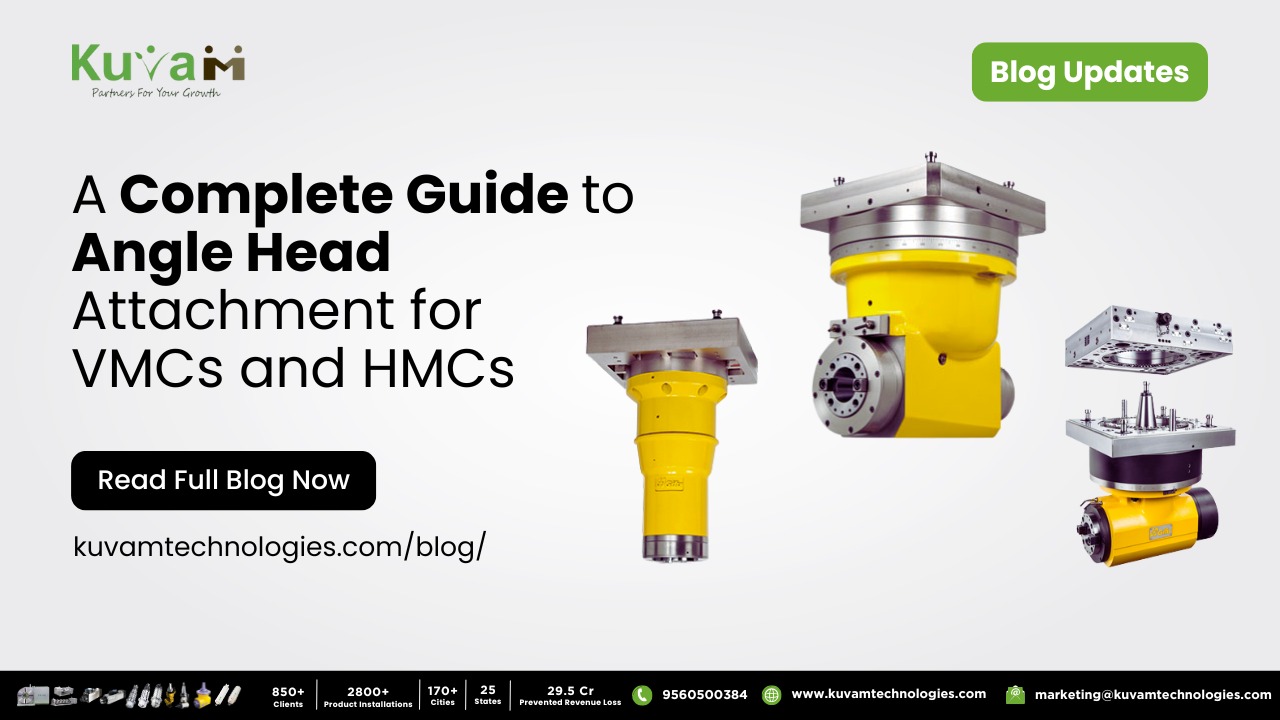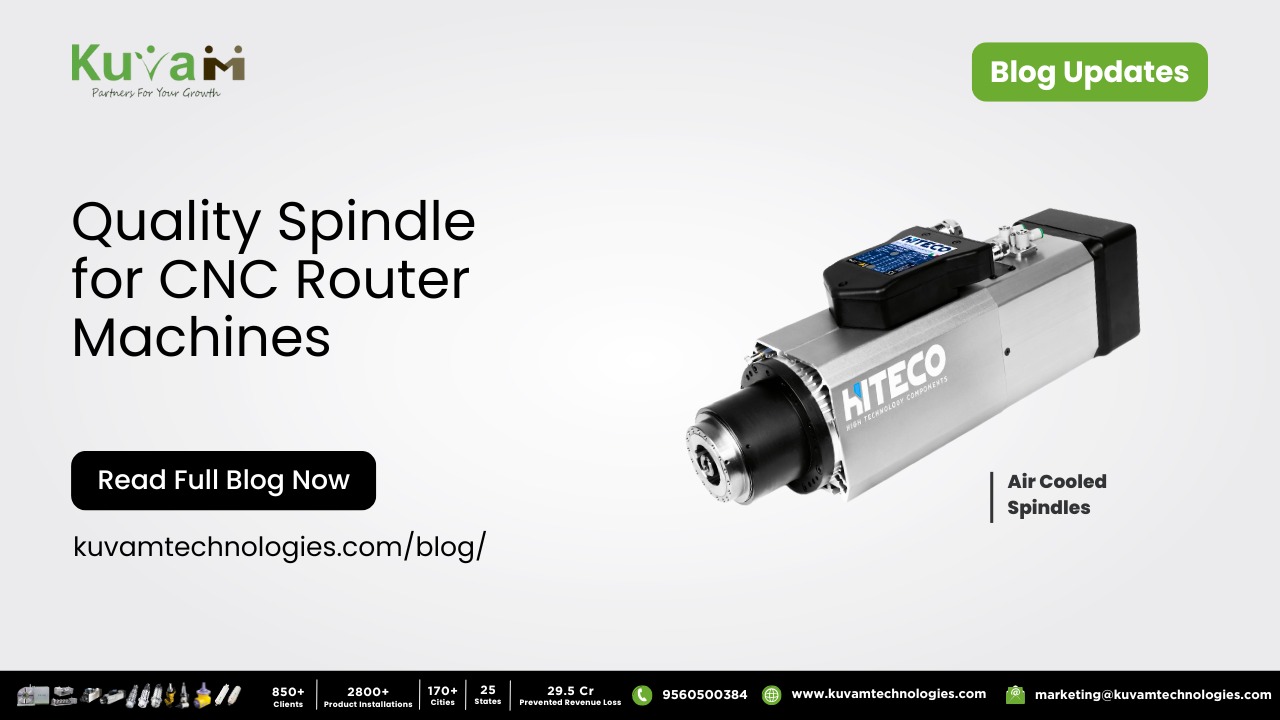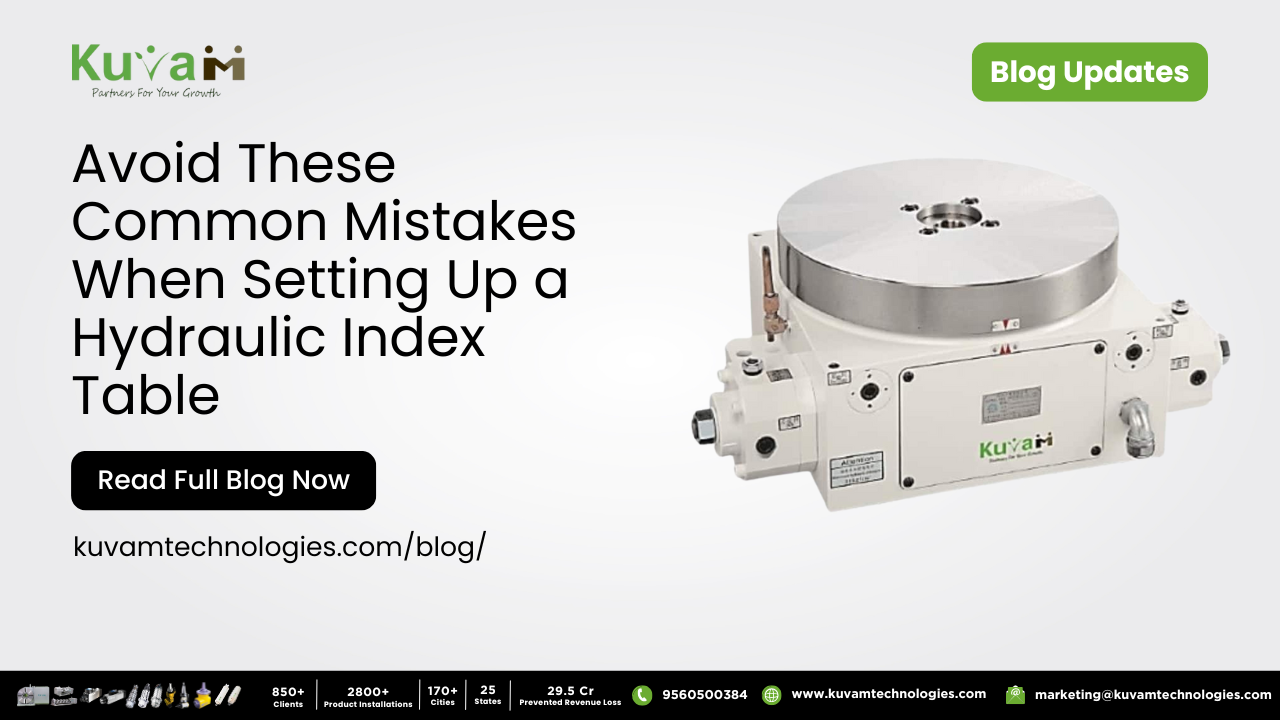Ever felt limited by your machine’s reach? In the dynamic world of manufacturing, where precision meets complexity, finding ways to push the boundaries of what’s possible is key. That’s where the humble yet mighty angle head attachment comes into play, transforming your Vertical (VMC) and Horizontal Machining Centers (HMC) into truly versatile powerhouses.
At Kuvam Technologies, we believe in empowering manufacturers. We know that reaching those tricky spots and making intricate cuts efficiently can be a game-changer. This guide is all about demystifying this crucial attachment, showing you just how it can elevate your machining capabilities.
So, What Exactly is an Angle Head Attachment?
An angle head is a specialized tool holder designed to change the direction of a machine’s spindle, allowing for machining operations at various angles relative to the main spindle axis. Essentially, it transforms a conventional VMC or HMC into a multi-axis machining powerhouse, enabling access to hard-to-reach areas and the creation of intricate geometries that would otherwise require multiple setups or specialized, more expensive machinery.
Why You’ll Love Having an Angle Head in Your Workshop
Bringing an angle head into your machining process isn’t just about adding a new tool; it’s about unlocking a world of benefits that directly impact your efficiency and bottom line:
- Reaching the Unreachable: This is the big one. Think about those hidden pockets, cross-holes, or angled surfaces that are a headache to access. With this attachment, they become easily machinable, often in a single setup.
- Cutting Down on Setup Time: Every time you re-fixture a workpiece, you lose precious minutes – and risk errors. An angular head for VMC or HMC dramatically cuts down on the need for multiple setups. More machining, less waiting!
- Boosting Accuracy and Finish: Fewer setups mean fewer chances for slight misalignments. This translates directly into higher precision for your finished parts and, thanks to the inherent stability of a quality attachment, a smoother, more consistent surface finish.
- Making Your Machine More Agile: Suddenly, your standard VMC or HMC can tackle a wider array of tasks. From specialized milling to intricate drilling and tapping at tricky angles, a universal angle head effectively expands your machine’s skillset without investing in entirely new, expensive equipment.
- A Smart Investment: While there’s an initial cost, the savings in reduced labor, faster cycle times, and the ability to take on more complex jobs often make this attachment a highly cost-effective solution.
Types of Attachments: Finding Your Perfect Match
Just like tools come in different shapes and sizes, so do these versatile attachments. Here are some common varieties you’ll encounter:
- The Go-To: 90 Degree Angle Head: This is arguably the most popular, allowing you to machine perfectly perpendicular to your main spindle. If you’re doing a lot of side work or need a straightforward 90 degree head, this is your workhorse. Our Kuvam Technologies 90 degree milling head options are built for reliability.
- The All-Rounder: Universal Angle Head: When you need maximum flexibility, this is it. A universal angle head lets you set your tool at almost any angle, making it incredibly versatile for truly complex, multi-angled parts.
- Fixed Angle Wonders: Beyond the popular 90 degree angle head, you can also find heads designed for other specific, fixed angles (like 45 degrees) for recurring, specialized tasks.
- Sleek and Slim: For those tight spots, like intricate internal cavities, compact or slim versions are designed to get where other tools can’t.
- Built for Power: If you’re tackling heavy-duty material removal, there are robust attachments designed to handle higher loads and maintain rigidity under challenging conditions.
- Seamless Integration: Many modern designs are now compatible with Automatic Tool Changers (ATCs), which means even more automation and less manual intervention in your machining process.
Picking the Right Attachment: What to Look For
Choosing the best attachment means considering a few crucial factors:
- Machine Fit: Does it match your machine’s spindle taper? (Think BT40 angle head, BT50, HSK). Kuvam Technologies offers various options to ensure a snug fit.
- Tooling Size: Make sure it can accommodate the diameter and length of the cutting tools you plan to use.
- Power and Speed: Check the maximum RPM and torque ratings to ensure they align with your machining demands and material requirements.
- Precision Matters: For accurate results, look for attachments with very low runout.
- Coolant Flow: If you’re working with tough materials or deep holes, an attachment with coolant-through-spindle (CTS) capability can significantly improve chip evacuation and extend tool life.
- Built to Last: A high-quality attachment is an investment. Look for durable construction and quality materials that can withstand rigorous workshop environments.
Kuvam Technologies: Your Partner in Precision
Here at Kuvam Technologies, we’re passionate about helping you maximize your machining potential. Our carefully engineered range of angle head attachments, from the dependable 90 degree head to the incredibly adaptable universal angle head, is crafted for performance and longevity on your VMCs and HMCs.
Whether you’re searching for a specific right angle head for VMC applications or exploring how an angular head for VMC can redefine your capabilities, our team is ready to assist. We understand that every project has its unique demands, and we’re committed to guiding you to the perfect angle head solution for your operations.
Ready to explore new dimensions in your machining? Connect with Kuvam Technologies today and discover how our Angle Head attachments can transform your workshop!
FAQs about Angle Head Attachments
Q1: What is an angle head attachment, and why is it important for VMCs and HMCs?
An angle head attachment is a specialized tool holder that changes the direction of a machine’s spindle, allowing for machining at various angles. This is crucial for VMCs and HMCs as it enables access to hard-to-reach areas, reduces the need for multiple workpiece setups, and allows for more complex part geometries, significantly boosting efficiency and versatility.
Q2: How do angle head attachments improve machining efficiency and accuracy?
By enabling multiple operations in a single clamping, angle head attachments drastically reduce setup times and downtime. Fewer setups mean less handling of the workpiece, which minimizes the risk of cumulative positioning errors, leading to improved precision and a superior surface finish in the final product.
Q3: What are the most common types of angle head attachments available?
The most common types include the 90-degree angle head for perpendicular operations and the universal angle head for machining at virtually any angle. Other types include fixed-angle heads, slim/compact heads for confined spaces, heavy-duty versions, and those compatible with Automatic Tool Changers (ATC).
Q4: What key factors should I consider when choosing an angular head for my machine?
When selecting an angular head, consider compatibility with your machine’s spindle interface (like BT40, BT50, HSK), the maximum tool diameter and length it can accommodate, its maximum RPM and torque, and its runout for precision. Also, check for Coolant Through Spindle (CTS) capability and overall durability.
Q5: Can angle head attachments save me money in the long run?
Yes, absolutely. While there’s an initial investment, the long-term savings from significantly reduced setup times, increased machine uptime, improved efficiency, and the ability to take on more complex and diverse jobs often make angle head attachments a highly cost-effective solution that boosts your bottom line.




